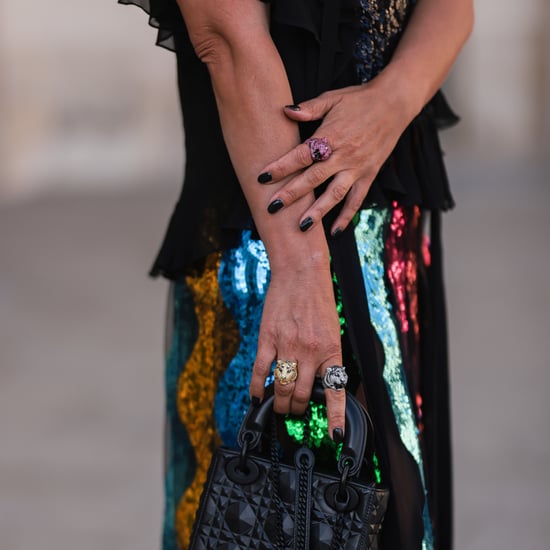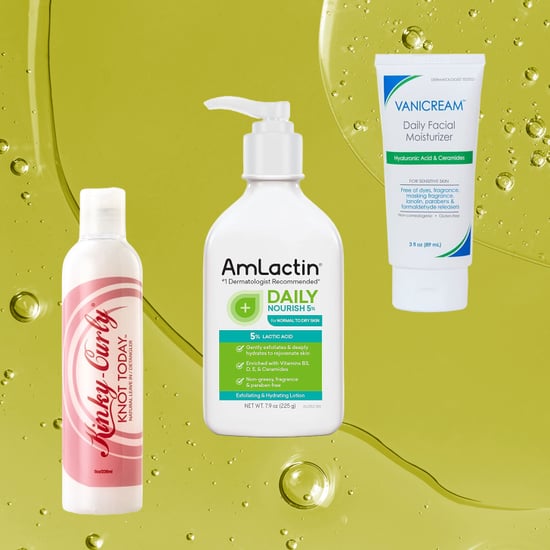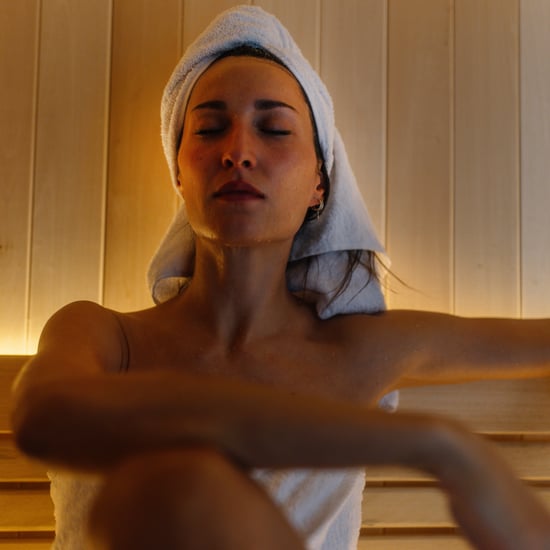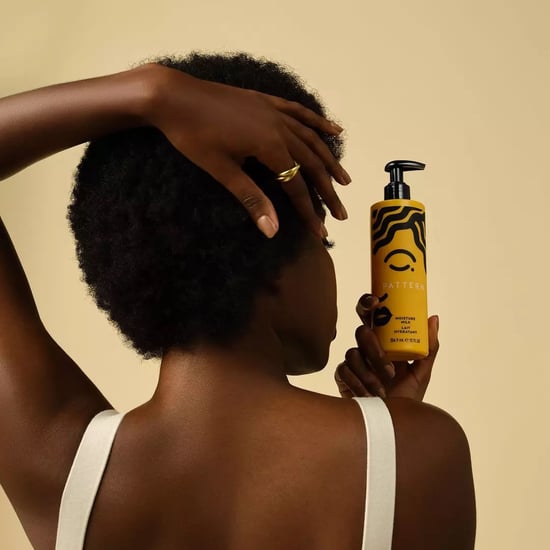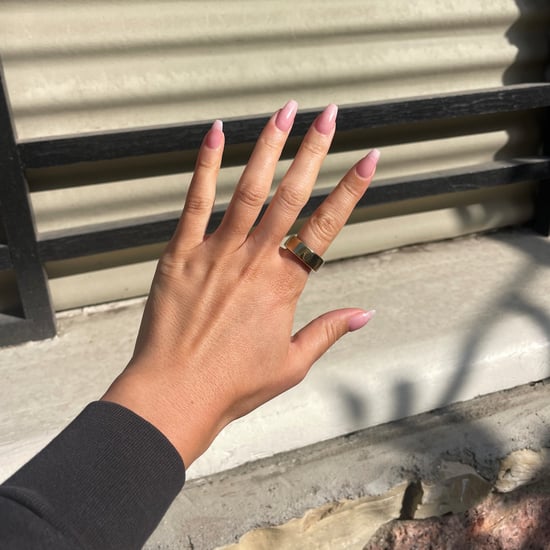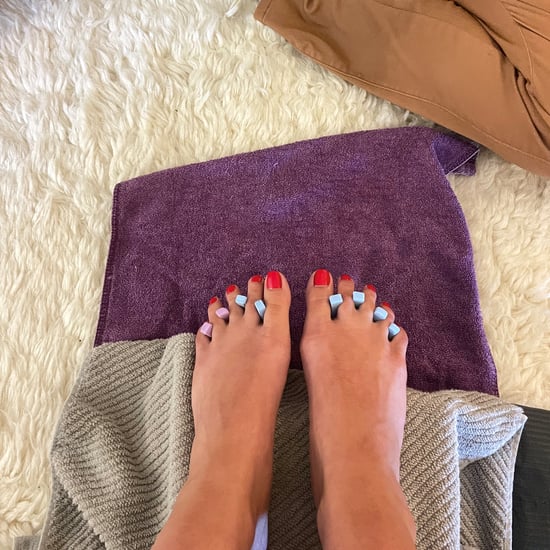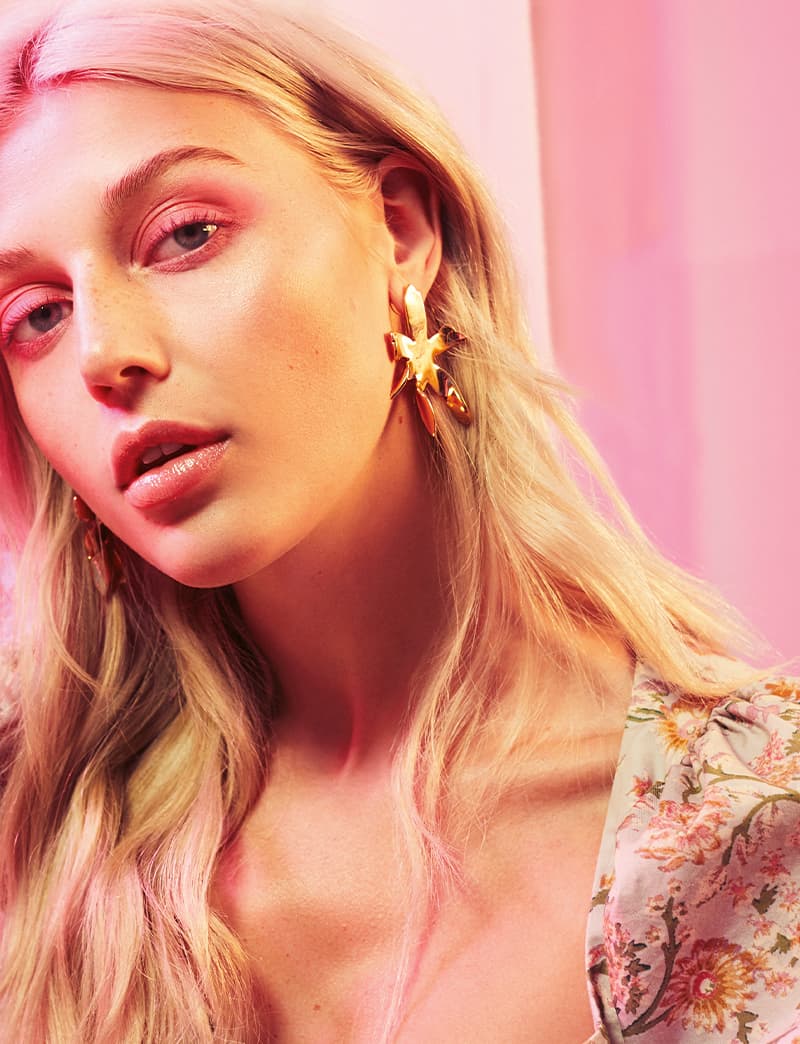Sustainable Beauty: What Each Buzzword Means
What Every Sustainable Beauty Buzzword Really Means
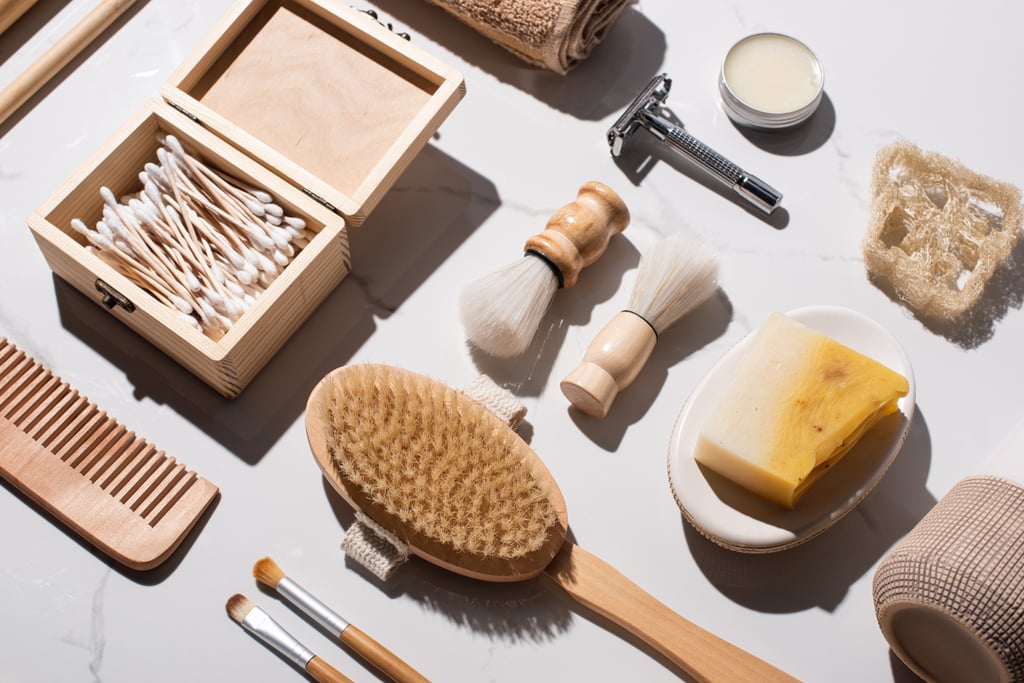
Beauty consumers are becoming increasingly aware of the ingredients in their go-to products, as well as the effects those products and their packaging might have on the environment. Over the last few years, countless buzzwords under the sustainable-beauty umbrella — think: "zero-waste," "upcycled," "waterless," "clean," and "eco-friendly," just to name a few — have been used by beauty brands to address people's demands for more conscientious options. But because the Food and Drug Administration doesn't regulate these terms in the context of cosmetics labeling and ingredients, it can be hard to understand what they all really mean.
Now, as experts make greater attempts to stop the spread of misinformation (and as more of the aforementioned terms are written off as being fearmongering marketing jargon), the world of sustainable beauty has gained a reputation for being quite complicated and difficult to decipher. To cut through all the noise, we've put together a breakdown of the most commonly used terms and phrases.
Keep reading for a guide to every sustainable beauty buzzword out there and exactly what each one means.
"Zero-Waste" Beauty
According to Ashlene Nand, who founded zero-waste beauty brand Vaycay Beauty, this term can be defined in a handful of ways. "Generally, what I look for as a consumer and beauty founder are products that aren't contributing to our landfill crisis," she tells PS. "The less waste you have to throw out, the better. Aside from cardboard, which is generally compostable and biodegradable, many zero-waste beauty products use reusable tins or glass mason jars to hold the actual product instead of plastic."
As stated in a 2015 Euromonitor report, the beauty industry produces over 120 billion units of packaging a year, which makes the idea of switching to a zero-waste routine sound slightly intimidating. Most people might think this would call for a complete overhaul of your beauty routine, but even the smallest changes can make a difference. "Similar to the approach of eating one vegan meal a day, if we try to switch out two or more of our core products, collectively, we can make a difference to our planet," Nand says.
Additionally, a handful of companies have popped up in recent years with zero-waste missions and others that offer incentives for customers to recycle and drop off empty packaging.
"Waterless" Beauty
Waterless beauty products are exactly what they sound like: formulas that don't include water. There are a handful of reasons a brand may choose to release a product free of this valuable resource, a major one being that it helps minimize the use of plastic packaging (of which there's something like 42.1 billion bottles used to ship products of mostly water).
According to a 2021 Whole Foods trend report, "When a product isn't in liquid form, brands can use materials, like recyclable boxes or metal tins. The product is generally smaller, reducing the amount of packaging and the shipping weight too. So expect to see shampoo and conditioner bars that leave hair fresh and clean with less packaging and toothpaste tablets that whiten, brush away plaque and do good for the environment."
To add to that, products that only feature key ingredients are often more efficacious. "Most skin-care formulas are roughly 70 to 80 percent water, so if you remove the water, then you are left with mainly your active ingredients, which are going to have a greater impact on your skin," says Shea Amiruddin, Heyday's director of skin education. "This also means less filler [ingredients] and sometimes even preservatives so your products are just full of the good stuff that will change and treat your skin."
"Upcycled" or "Circular" Beauty
Brands are now beginning to repurpose would-be food waste into skin-care products. According to the Whole Foods trend report, this includes "coffee grounds, discarded apricot stones, leftover argan shells," and other food waste that might otherwise get discarded being upcycled and making their way into beauty products. This term can also refer to packaging that gets recycled to become a new beauty product (either from the same brand or otherwise), which brings the use of plastic "full circle."
"PCR" or "Post-Consumer Plastics"
Post-consumer recycled plastics (or PCR) are materials made out of recycled everyday items. The difference between these products and recyclable beauty products is that PCR material can't be recycled again since it's already made from recycled materials. Several brands are jumping on the PCR train since investing in this type of packaging helps to reduce a company's carbon footprint.
"Fair Trade"
Fair trade is when workers in developing countries are paid fair prices for their products by those in developed countries, ensuring the sellers can create their goods sustainably and pay those who work for them fair wages. It essentially means paying enough for goods and services so those who provide those goods are making enough money to live comfortably in their respective countries. For a company to be fair-trade-certified, it also must be able to ensure its employees are working under safe and healthy conditions.
An example of a popular fair-trade beauty brand is Alaffia, which sells products like unrefined shea butter and African black soap that are handcrafted by women's cooperatives in Africa using traditional methods before being finished at the company's US headquarters in Olympia, WA. Once the products are sold, the proceeds are immediately returned to Togo, founder Olowo-n'djo Tchala's home country, to help fund a number of initiatives like maternal health, education, reforestation, and sustainability. The goal is to alleviate poverty, encourage gender equality, and ultimately protect women, whom Tchala said in a previous interview with PS are the backbone of West African communities.
!["Carbon-Neutral" and "Carbon-Negative" Beauty
Supporting a carbon-neutral beauty brand means purchasing products from a brand that actively works to reduce its carbon footprint, or the total amount of greenhouse gases produced by a person or entity. To be carbon neutral means to offset your release of carbon dioxide into the atmosphere by contributing to causes around the world that help tackle climate change.
Carbon-negative brands are similar, except they offset the carbon they produce, in addition to removing extra carbon dioxide from the atmosphere in an effort to help reverse climate change.
"B Corp Certification"
A company that's B Corp certified is one that finds a balance between purpose and profit and consistently considers how its practices may affect its workers, customers, suppliers, community, and the environment. As noted in a previous POPSUGAR article, the B Corp Certification is an initiative created by B Lab, a global nonprofit started by three people who left their careers in business and private equity to make it easier for mission-driven companies to have a positive impact (which is continually improved upon over time) on people and the planet. The ultimate aim of B Lab is to use the power of business to address social and environmental issues.
Any company hoping to become certified will be assessed exam-style in five areas: governance, workers, customers, community, and the environment. The exam includes 4,000 questions about how each company conducts business, and to receive the certification, businesses are required to score a minimum of 80 points across all categories. Davines, Dr. Bronner, Ethique, Beautycounter, and The Body Shop are just a few of our favorite B Corp-certified beauty brands.
"Clean" Beauty
Clean beauty may be the most commonly misunderstood term of the bunch. In 2010, the David Suzuki Foundation released a list of ingredients now referred to as the "dirty dozen," or 12 common chemicals found in cosmetics that are potentially harmful to the health of consumers. A clean beauty product is one that's formulated without controversial ingredients like phthalates, parabens, oxybenzone, aluminum, some fragrances, and more. However, because there's little regulation from the FDA in terms of what can be labeled "clean" and what can't, any brand can slap a "clean" label on its products for the sake of marketing.
"There is no official definition for 'clean' as it pertains to [beauty] products, and different companies may use it referring to different things," dermatologist Francesca Fusco, MD, says. "When I ask companies to explain, I get responses like that a product is vegan, organic, natural, or has no chemicals, preservatives, is 'ethical' with minimal waste, or ingredients that are on the warning list with the Environmental Working Group that would be glass and not plastic."
Despite the lack of official definition, the market around clean beauty products is booming — and expected to be worth $54.5 billion by 2027, according to a consumer insights report from Statistica.
"Vegan" Beauty
In the same way vegan foods don't contain any animal byproduct, vegan beauty products don't contain animal-based ingredients such as beeswax, lanolin, milk, and honey. Determining whether a product is vegan can be slightly tricky, though, considering the label on the back isn't always going to point out whether a specific ingredient is animal-derived. (For example, you'd only know that a product containing lanolin isn't vegan if you were already aware that lanolin is derived from sheep wool, not because the label tells you that.)
These days, though, many brands make it clear whether their products are vegan, and there are certifications from groups like PETA and The Vegan Society that help validate these claims. That goes for fan-favorite brands like The Lip Bar and E.L.F. Cosmetics.
"Blue" Beauty
Blue beauty is a movement that was spearheaded by Beauty Heroes founder Jeannie Jarnot in an effort to preserve oceans, since wasteful, nonrecyclable packaging can eventually end up in the ocean after being discarded, destroying and/or harming the underwater habitats and the animals that live in them.
"Blue beauty specifically supports ocean conservation, using reef-safe ingredients and moving toward zero-waste packaging, or packaging that is virtually plastic free," says Jillian Wright, founder of Indie Beauty Expo.
In an effort to decrease the amount of plastic that ends up in the ocean, more brands have begun producing items featuring sustainable packaging.
"Organic" Beauty
In terms of food, organic typically means a product was farmed without the use of chemicals or pesticides, but according to the United States Department of Agriculture (USDA) website, the "FDA does not define or regulate the term 'organic,' as it applies to cosmetics, body care, or personal care products." Still, a beauty product can carry an "organic" seal if at least 70 percent of its ingredients are organic.
"Natural" Beauty
Natural products usually feature ingredients that are naturally derived, but it's important to remember that a product being made of natural ingredients doesn't always make it safer than those that aren't.
"Calling a beauty product 'natural' legally means nothing," says Ebru Karpuzoglu, PhD, the founder of natural skin-care brand AveSeena. "It's an unregulated term because the FDA, USDA, or EU do not have any regulations or standards on the term. Since there is no regulation on the 'natural' term, anyone can just use one or two natural ingredients in a product and call it natural. If you see the natural ingredients only at the end of the product's ingredient list, that means it's hardly natural."
"Cruelty-Free" Beauty
You might think vegan and cruelty free are the same, but that's not the case. Cruelty-free brands are those that don't test their products and ingredients on animals. You can usually tell if a product hasn't been tested on animals if it features a rabbit symbol on the label, aka the Leaping Bunny certification. Garnier is an example of a major global beauty brand that committed to being cruelty free, following in the earlier footsteps of CoverGirl, which received a Leaping Bunny seal back in 2018.
Danielle Jackson is the former assistant editor for POPSUGAR Beauty. "Carbon-Neutral" and "Carbon-Negative" Beauty
Supporting a carbon-neutral beauty brand means purchasing products from a brand that actively works to reduce its carbon footprint, or the total amount of greenhouse gases produced by a person or entity. To be carbon neutral means to offset your release of carbon dioxide into the atmosphere by contributing to causes around the world that help tackle climate change.
Carbon-negative brands are similar, except they offset the carbon they produce, in addition to removing extra carbon dioxide from the atmosphere in an effort to help reverse climate change.
"B Corp Certification"
A company that's B Corp certified is one that finds a balance between purpose and profit and consistently considers how its practices may affect its workers, customers, suppliers, community, and the environment. As noted in a previous POPSUGAR article, the B Corp Certification is an initiative created by B Lab, a global nonprofit started by three people who left their careers in business and private equity to make it easier for mission-driven companies to have a positive impact (which is continually improved upon over time) on people and the planet. The ultimate aim of B Lab is to use the power of business to address social and environmental issues.
Any company hoping to become certified will be assessed exam-style in five areas: governance, workers, customers, community, and the environment. The exam includes 4,000 questions about how each company conducts business, and to receive the certification, businesses are required to score a minimum of 80 points across all categories. Davines, Dr. Bronner, Ethique, Beautycounter, and The Body Shop are just a few of our favorite B Corp-certified beauty brands.
"Clean" Beauty
Clean beauty may be the most commonly misunderstood term of the bunch. In 2010, the David Suzuki Foundation released a list of ingredients now referred to as the "dirty dozen," or 12 common chemicals found in cosmetics that are potentially harmful to the health of consumers. A clean beauty product is one that's formulated without controversial ingredients like phthalates, parabens, oxybenzone, aluminum, some fragrances, and more. However, because there's little regulation from the FDA in terms of what can be labeled "clean" and what can't, any brand can slap a "clean" label on its products for the sake of marketing.
"There is no official definition for 'clean' as it pertains to [beauty] products, and different companies may use it referring to different things," dermatologist Francesca Fusco, MD, says. "When I ask companies to explain, I get responses like that a product is vegan, organic, natural, or has no chemicals, preservatives, is 'ethical' with minimal waste, or ingredients that are on the warning list with the Environmental Working Group that would be glass and not plastic."
Despite the lack of official definition, the market around clean beauty products is booming — and expected to be worth $54.5 billion by 2027, according to a consumer insights report from Statistica.
"Vegan" Beauty
In the same way vegan foods don't contain any animal byproduct, vegan beauty products don't contain animal-based ingredients such as beeswax, lanolin, milk, and honey. Determining whether a product is vegan can be slightly tricky, though, considering the label on the back isn't always going to point out whether a specific ingredient is animal-derived. (For example, you'd only know that a product containing lanolin isn't vegan if you were already aware that lanolin is derived from sheep wool, not because the label tells you that.)
These days, though, many brands make it clear whether their products are vegan, and there are certifications from groups like PETA and The Vegan Society that help validate these claims. That goes for fan-favorite brands like The Lip Bar and E.L.F. Cosmetics.
"Blue" Beauty
Blue beauty is a movement that was spearheaded by Beauty Heroes founder Jeannie Jarnot in an effort to preserve oceans, since wasteful, nonrecyclable packaging can eventually end up in the ocean after being discarded, destroying and/or harming the underwater habitats and the animals that live in them.
"Blue beauty specifically supports ocean conservation, using reef-safe ingredients and moving toward zero-waste packaging, or packaging that is virtually plastic free," says Jillian Wright, founder of Indie Beauty Expo.
In an effort to decrease the amount of plastic that ends up in the ocean, more brands have begun producing items featuring sustainable packaging.
"Organic" Beauty
In terms of food, organic typically means a product was farmed without the use of chemicals or pesticides, but according to the United States Department of Agriculture (USDA) website, the "FDA does not define or regulate the term 'organic,' as it applies to cosmetics, body care, or personal care products." Still, a beauty product can carry an "organic" seal if at least 70 percent of its ingredients are organic.
"Natural" Beauty
Natural products usually feature ingredients that are naturally derived, but it's important to remember that a product being made of natural ingredients doesn't always make it safer than those that aren't.
"Calling a beauty product 'natural' legally means nothing," says Ebru Karpuzoglu, PhD, the founder of natural skin-care brand AveSeena. "It's an unregulated term because the FDA, USDA, or EU do not have any regulations or standards on the term. Since there is no regulation on the 'natural' term, anyone can just use one or two natural ingredients in a product and call it natural. If you see the natural ingredients only at the end of the product's ingredient list, that means it's hardly natural."
"Cruelty-Free" Beauty
You might think vegan and cruelty free are the same, but that's not the case. Cruelty-free brands are those that don't test their products and ingredients on animals. You can usually tell if a product hasn't been tested on animals if it features a rabbit symbol on the label, aka the Leaping Bunny certification. Garnier is an example of a major global beauty brand that committed to being cruelty free, following in the earlier footsteps of CoverGirl, which received a Leaping Bunny seal back in 2018.
Danielle Jackson is the former assistant editor for POPSUGAR Beauty.](https://media1.popsugar-assets.com/files/thumbor/8aHaFaAd_wJh8P51Y_FjQox1WAI/fit-in/1024x1024/filters:format_auto-!!-:strip_icc-!!-/2021/04/12/730/n/1922153/6e501fe9337714fe_GettyImages-1208483325/i/Carbon-Neutral-Carbon-Negative-BeautySupporting.jpg)

